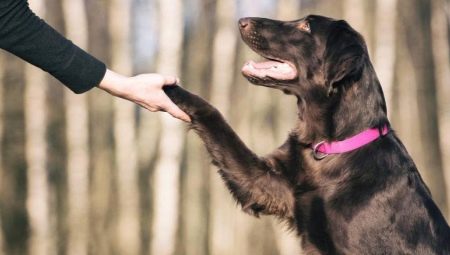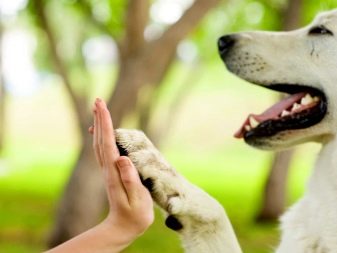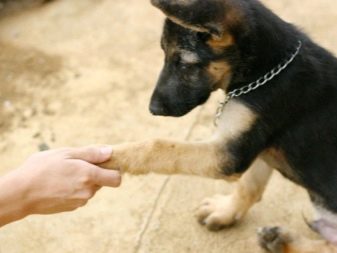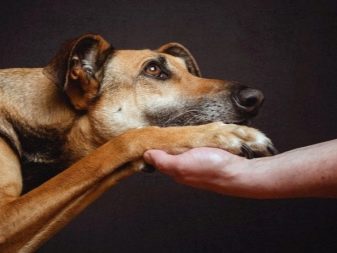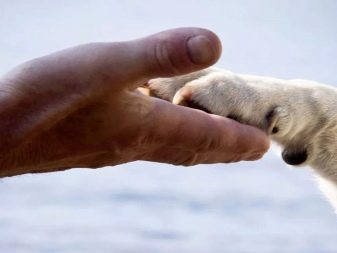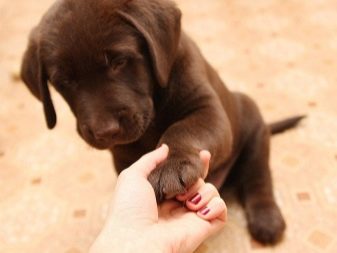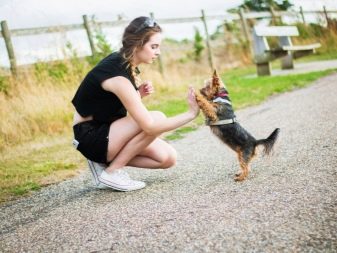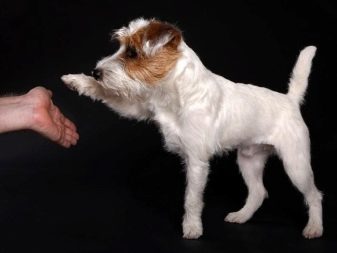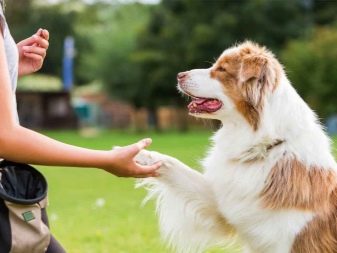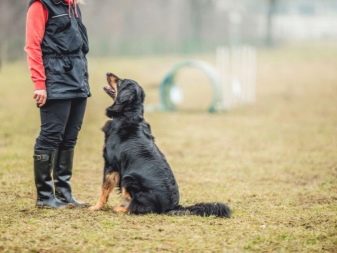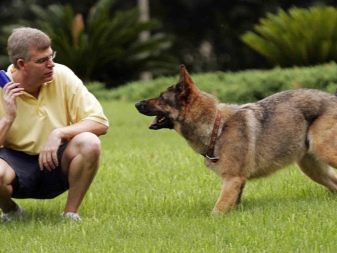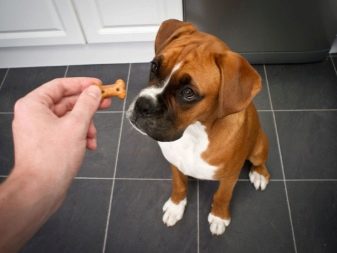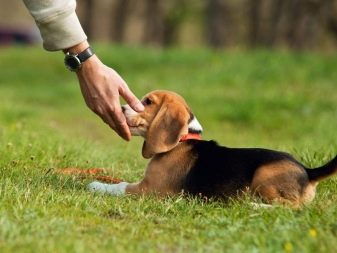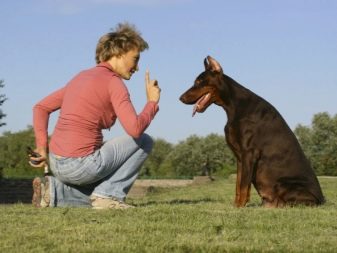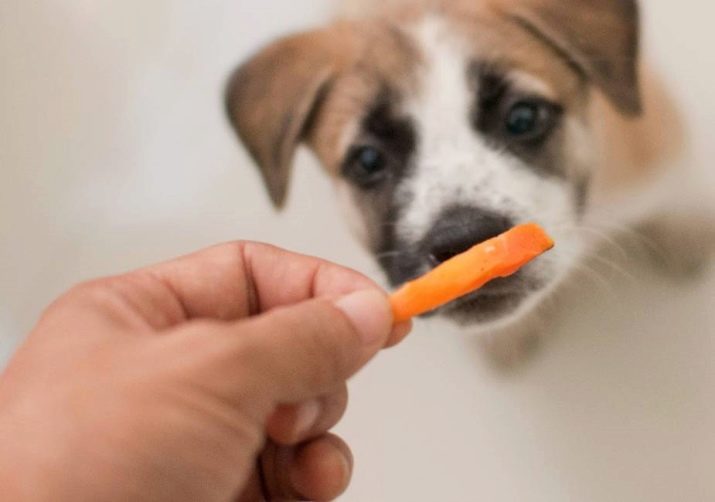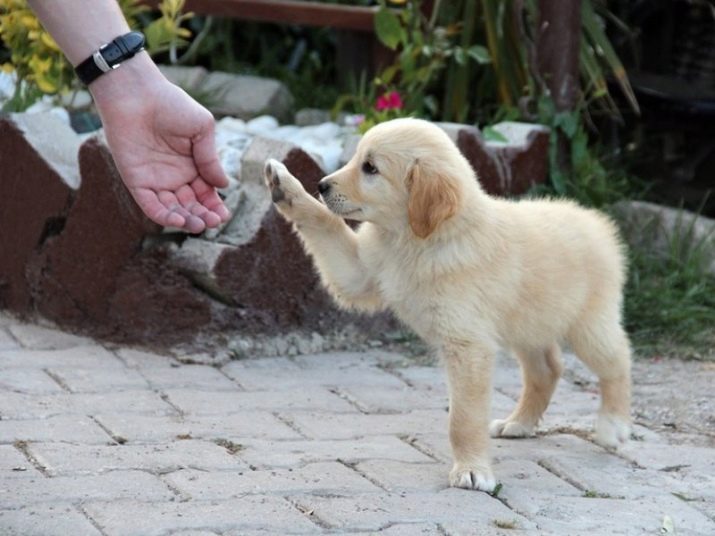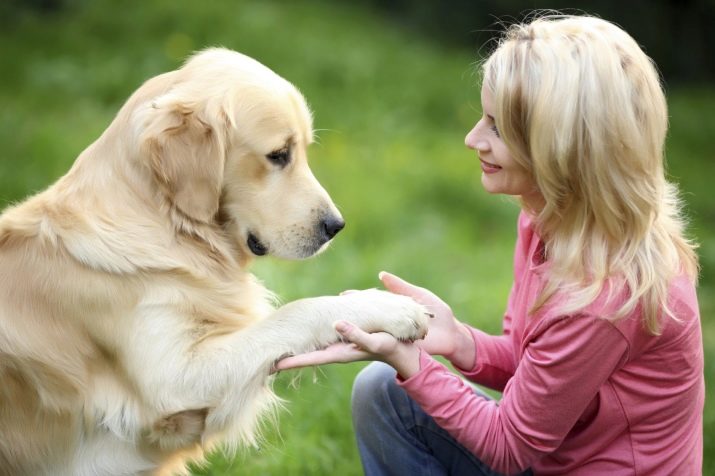The command "Give a paw" is one of the most common. But the paradox is that she is not taught in any courses. Many owners of four-legged friends consider it absolutely unnecessary. Let's see if it is worth spending time and energy on teaching this team how to do it easily and quickly.
Should I teach a dog?
The team we are considering doesn’t really have much value. If the execution of other orders is due to certain needs or even security considerations, then a simple “Give me a paw” seems to be of little importance against their background. But not everything is so simple. The fact is that dogs are not robots and not soulless insects. In addition to simple physiological needs, they have other more complex in psychological terms. Therefore, this simple command will help to establish closer contact with your favorite. Several important aspects will help to believe in the need to train the team.
- Everyone understands that different breeds were bred at one time for a particular purpose. Some were excellent hunters, others were guards, others were kept for beauty. But every four-legged friend needs to feel his “need”. Teaching how to give a small breed dog's paw is as important as carrying a sledge. The fact is that they cannot play the role of protector or hunter, but they also need to understand that they are important and necessary for the owner. Praise for the execution of the team - this is a kind of confirmation that the owner loves and appreciates it. Therefore, the importance of this team from this point of view is very high. The dog understands that it correctly performs the tasks of its owner, which means that it knows something.
- Moment of trust. If a pet unconditionally gives you a paw and is not in a hurry to remove it, it can only mean one thing - it trusts you completely. The paradox also lies in the fact that emotional convergence occurs at the stage of training. Teaching the team in one lesson is impossible, and it will take more than one day to consolidate the skill, which can only mean one thing, you will spend more time with the dog. And the positive effect of such a rapprochement will not take long.
- Auxiliary function. With this simple manipulation, the owner can easily inspect the paws and pads of the dog, cut the claws, and so on. But professionals advise to practice individual teams for these purposes. At the first stages it is possible to use this universal team. Different teams are needed to ensure that the dog understands exactly what is required of him and what will follow after execution. For example, if after a simple “Give a paw” command, you immediately give a treat, then the “Let me see” command will mean that the treat will follow only after you carefully inspect this very paw.
- Sometimes even in untrained dogs you can observe the habit of raising a paw on the owner. She may have a different character. This may be a requirement to attract attention, please give a treat. But in some cases, this is an attempt to improve their status, to show leadership skills. In this case, the process must be completely under your control. The command "give a paw" is very disciplined. The dog understands that raising a paw on a person is possible only when he asks for it. This is especially true for dogs of large breeds.
- Having mastered this simple command, both the owner and the dog will be able to understand that training is not so difficult. It is only important to devote enough time to it, systematize the process and be persistent and patient. Dogs love to learn something new. But it will be useful for their owners. Therefore, the command “give a paw” can become the first step in long and consistent training.
Learning age
Often beginning dog breeders ask themselves the question at which age to start training. Experts say that dogs can be trained by any age group. But each of them has its own characteristics that must be considered.
1.5–3 months old
Many make a critical mistake, considering that the puppy is still too small for training. All attempts to learn at least one simple command are reduced to zero. Little fidget hunt to play and have fun, but not to carry out boring incomprehensible commands. Nevertheless, having begun training in this period, you will achieve better results in the future. It should be noted that the whole learning process should be reduced to the game, as it happens in children.
You should not force the puppy to do the same exercise against his will. Just remember to repeat the lesson every day. It will be enough to repeat the exercises 3-5 times so that the dog begins to understand what they want from it.
If you can turn the training at this age into an exciting game, by three months your pet will perceive and execute the simplest commands - “sit”, “lie down” and so on.
Older than 4 months
It is at this age that serious work begins. And although classes should still be held in a calm or moderately playful manner, they should be repeated daily. If you started training earlier, now it will be much easier for you, since the puppy is already familiar with what teams are.
Do not worry if you can not quickly develop a particular skill in a pet. The most important thing is the frequency and positive attitude.
Adult dogs
If at a young age, training was not given due attention, then it will be much more difficult to train an adult individual to commands. But it is possible. There are situations when a dog enters the house as an adult. However, she does not know any of the usual commands. Do not despair. Even in adulthood, you can and should train a dog. It may just take a little more time and effort. But you should not give up or consider it an empty project.
Rules of training
In addition to the very desire to train a dog to any team, it is necessary to understand and apply in practice the general rules of dog training. That person is the owner of the dog, and not vice versa. Therefore, it is important to gain authority and achieve rigorous obedience (within reason, of course). Much depends on how you are in the mood and how you train. You should not shift all the blame on the dog and assume that it is not able to understand the elementary task. First of all, pay attention to those methods and the attitude with which you conduct training.
Here are some more important tips from professionals who will help in training.
Calm and patience
It is worth taking into account several recommendations.
- The dog does not understand the words, but clearly distinguishes between sounds and intonation. The command must be given in the same mode each time. The pet should get used to one clear phrase.
- Be strict, but do not be angry. It often happens that training does not bring the desired results. Then the owners begin to get annoyed and tear the anger on the dogs. This should not be allowed. The effect will be exactly the opposite. Therefore, do not yell at the dog, especially not physically punish.
- Be demanding of yourself and the dog. Skip the next training is not allowed. This applies to both you and the pet. Do not let him dodge and get away from classes. But you should not allow yourself to be weak.
- Another common mistake is repeating a command multiple times. You should say it no more than two times.If you begin to endlessly say “Give a paw”, “Give a paw”, “Give a paw”, then this will lead to exactly the opposite effect. From the very beginning, accustom the dog to the fact that you are the commander, therefore the execution of the order is not discussed.
- If the puppy begins to play around and play instead of executing a command, stop it with a stop word. It should be the same for different situations. This may be the command “bad”, “no”, “fu” and so on.
Praise
Remember the indisputable truth that a kind word and a cat nice. So the dogs are also waiting for approval and praise from you. Do not forget about it, otherwise the dog will lose interest in the execution of commands and training in general.
- Praise is necessary sincerely and in the case. Intonation must be appropriate. The dog must understand that he did everything right, the owner is truly pleased with his work. It is better if you come up with a few standard words (clever, well done, handsome).
- Weasel should not be rude. You can pet the dog on the top of the head, but do not roughly slap or ruffle the ears. This can be interpreted as violence.
- If you are working on a new command that is not yet given to the dog, then you still need to finish on a positive note. Offer him the execution of an already familiar and well-established team. Do not feel sorry for delicacies.
Many are afraid that the dog will get used, and in the future will execute commands only for the sake of getting a tasty morsel. Do not worry, your praise and approval for her is no less important and valuable. Over time, the need for such feeding will disappear.
Systematic
This criterion is manifested in the following:
- do not miss classes;
- master everything step by step - first work out one command to automatism, only then proceed to the next one;
- It is best to conduct training 6–7 hours after a meal; the pet will be more willing to fulfill the requirements for a treat;
- you yourself must be positively charged, do not start training in a bad mood, it will affect the dog.
Effective ways
There are three effective ways to train a dog to "Give a paw". Which one to choose depends on your preferences and the nature of the pet.
Guidance method
Without physical contact, you show the dog (gestures) what is required of it. To do this, it is necessary to set the puppy in front of you, hold a treat in your hand and bring it to your nose so that she understands that it is meant for her. A favorite will try to get her nose, do not let him carry out his plan. Say the command loudly. After an unsuccessful attempt to get a treat with the nose, reflexively, many dogs raise their paw in order to get the cherished piece. Place your free hand under it while pronouncing the command. When the paw is in the hand, praise and give a treat.
Do not forcibly hold the paw. In the first stages it will be enough that the dog will voluntarily place it on your palm.
Do not forget to praise the pet after a successful attempt. It does not matter whether you yourself put your hand under his paw (at first) or the dog already consciously does it. Praise will help make sure that everything is done correctly.
Repeat host action
Here is a little easier to achieve the desired. You give the command and take the paw yourself, then praise. But each time it is necessary to complicate and ensure that the dog himself raises and gives you a paw.
Behavior selection
You know the habits of your pet well and are able to predict its effect. For example, he may ask for a treat or demand to play, touching you with his paw. Use this moment and give the command before the dog does it himself. Do not forget to praise.
For details on how to train a dog to give a paw, see the video below.
